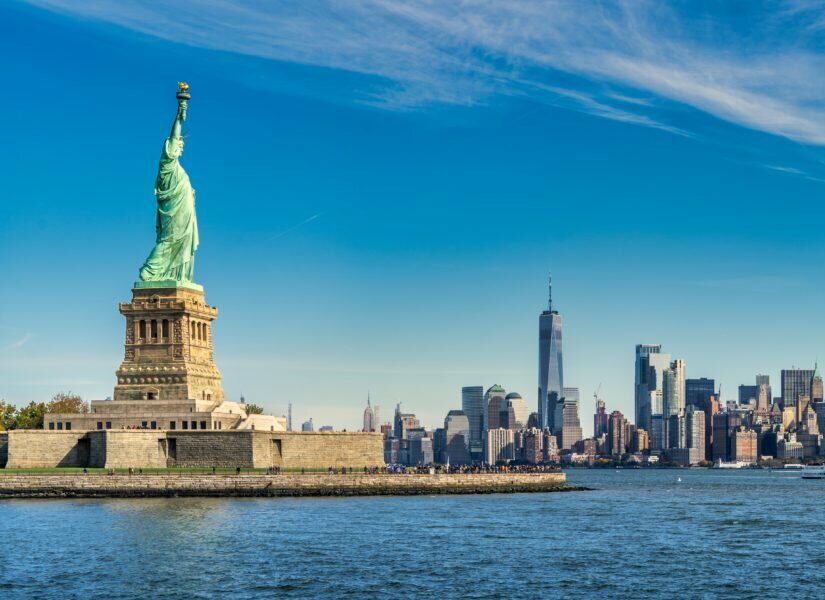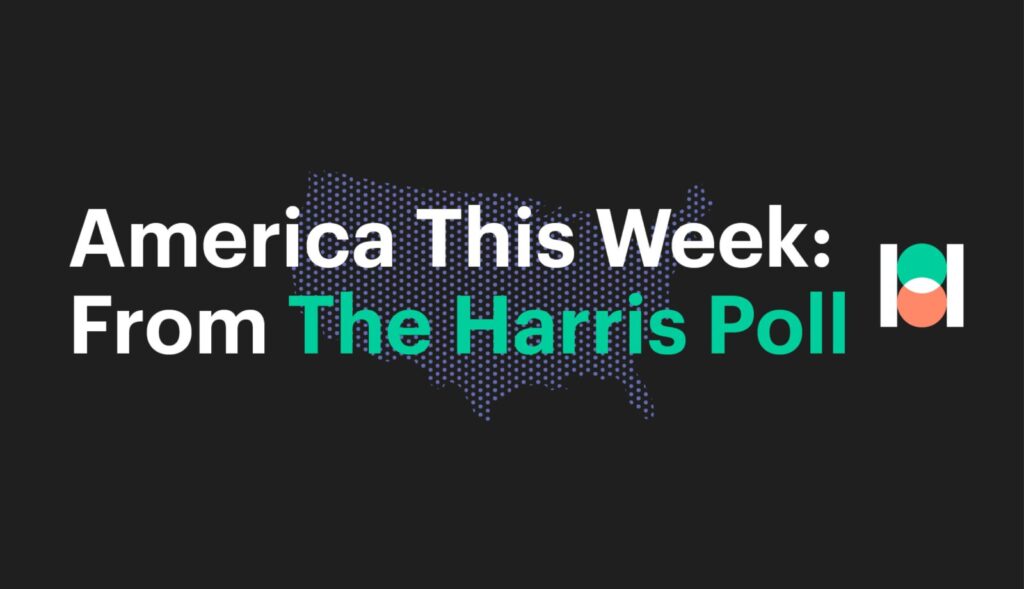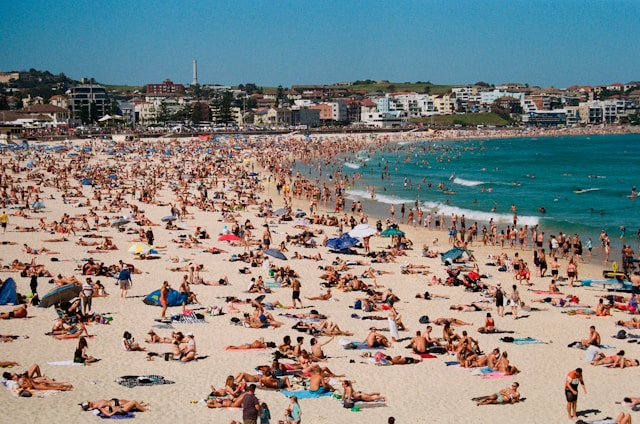Brief • 3 min Read

The COVID-19 pandemic has had widespread effect on Americans’ everyday lives, especially those that live in urban areas. No longer merely staying home, many urban dwellers have considered moving to new homes outside the city. New York City has taken center stage as the poster child for this suburban flight. As a result, concern about the future of American cities has become commonplace during the pandemic, so much so that a viral LinkedIn post in August 2020 declared “New York City is dead forever.”
However, a study by The Harris Poll and the Chicago Council on Global Affairs in November 2020, surveying New York City residents on their attitudes about urban and suburban life, reveals that such thinking is short-sighted. New Yorkers acknowledge the impact that pandemic has had on city life, but they are optimistic about the future of their city and the opportunities a post-pandemic future promises.
Urban Living Rivaled by Allure of Suburbia
Asked hypothetically where they would choose to live, 46% of New Yorkers say they would prefer to live in a city (big or small), another 46% would choose the suburbs, and only 8% would choose a rural area.*
When forced to answer about their current real-world experiences, though, most New Yorkers (53%) would not change where they currently live given their experiences with the pandemic. In fact, another 22% said that their experience with the pandemic say it would make them more likely to move to a more urban area.
Key Concerns and Opportunities
Nevertheless, New York residents do have serious concerns about local problems. Similar to those living in other metropolitan areas across the country, top concerns about the city included COVID-19 (69%), taxes and fees (49%), the economy (36%), and public safety (33%).
Handling the pandemic
Hard hit by the COVID-19 pandemic, New Yorkers were clear on who was most effective at handling the pandemic. Three in five (59%) say their state governor** has been very or extremely effective at addressing the pandemic. In fact, New Yorkers gave their governor a higher effectiveness rating than residents of any other metropolitan area in this study. The governor’s perceived effectiveness was much higher than the Centers for Disease Control and Prevention (CDC) (47%), the U.S. federal government (35%), and New York’s own mayor (41%).***
Looking at the mayor specifically, despite 44% of all residents saying they are very or extremely confident in their mayor’s ability to respond to the pandemic, one in five New Yorkers (19%) actually say their mayor has not been not been effective at all at addressing the pandemic.
Addressing the economy and standards of living
Most New York residents do recognize the efforts of local and state government to address economic issues. More than half say that their mayor (56%), other county or regional officials (53%), and their state governor (57%) have been at least somewhat effective at addressing economic inequality.
Unsurprising for a place renown for high rent and housing prices, residents still worry about city standards of living. A quarter of New Yorkers say they are very concerned about housing in their city, and 64% say the affordability of housing in their city is very or extremely important to them. This is especially important since the same share (63%) do not think their city has enough affordable housing options.
More than four in five New Yorkers (84%) support the creation of additional affordable housing in their city, and of those who want more affordable housing in their city, 92% support more affordable housing in their own neighborhood.
However, New Yorkers don’t appear to feel very hopeful about the future of housing in their city. Only 39% say they are very or extremely confident in their mayor’s ability to keep housing affordable.
Discrimination and public safety
Large metropolitan areas have seen their share of discrimination issues related to policing. This has made them susceptible to the protests regarding police maltreatment and social justice that peaked during the summer of 2020. New York has been no exception.
Overall, residents report some concern about social unrest, especially within their own neighborhoods. Just over half (51%) say they are concerned about social unrest in their city. Of that group, 65% say they are concerned about social unrest in the own neighborhood.
Even so, the majority of New York residents (69%) express support for the Black Lives Matter movement. Perhaps this is because they believe that local and state officials have been effective at addressing protests over racism and policing. The majority of New Yorkers say that their state’s governor (64%), the city’s police department (61%), and other county or regional officials have been at least somewhat effective at dressing such protests (58%).
Again, only two in five New Yorkers (40%) say they are very or extremely confident in their mayor’s ability to respond to respond to the recent protests about racism and policing. Nevertheless, unlike his performance with the pandemic, most New Yorkers (60%) say that their mayor has been at least somewhat effective at addressing protests over racism and policing.
This is especially noteworthy since, when asked who they would prefer take the lead on handling protests about racism and policing, New York residents selected national elected officials more often than state and city elected officials (38% vs. 30% and 24%, respectively). However, despite their preference for federal intervention, only half of New Yorkers (50%) say the federal government has been at least somewhat effective at addressing protests over racism and policing — compared to the nearly three in five who say the same for local and state officials.
Sustainability in the city
More than a quarter of New Yorkers (26%) report concern about the environment and climate change in their city. Sixty percent also believe that cities should be doing more to combat climate change.
Despite this belief, nearly half of all New Yorkers (49%) would prefer national elected officials take the lead on climate change compared to just 13% who think that city elected officials should. This may be reflected in the fact that only 28% of all New York City residents say they are very or extremely confident in their mayor’s ability to address climate change.
Again, we see the New York governor outshine New York City’s leadership. Fifty-eight percent of New York City residents say their governor has been at least somewhat effective at addressing climate change compared to 53% for their mayor and 53% for New York City’s parks and recreation department.
Those looking to curb the effects of human-influenced climate change have often proposed local transportation alternatives as one solution to climate change, and large metropolitan areas like New York are best positioned to test and implement them.
Employees are often the most frequent users of both private and public transportation. When asked which types of transportation alternatives they would be willing to consider, more than half responded positively to public transit (51%) while bicycles (both electric and non-electric) (43%) and electric scooters were less popular (34%).
Understandably, those who are reluctant to use public transit cite COVID-19 concerns most often (55%). However, they are also deterred by too much time spent in transit (39%) and concerns about personal safety (30%).
On the other hand, those reluctant to use bicycles or electric scooters for work point to traffic safety concerns, personal safety concerns, and that the distance is too far from work.
Despite their low enthusiasm for transportation alternatives like scooters and bikes, though, New York residents still want to make sure infrastructure is in place for such vehicles. Three quarters (73%) of New Yorkers still support additional infrastructure for bicycles and other very small vehicles.
Evaluating Local Government
New York City residents believe that their local elected leaders are capable of governing, but they also believe that their elected leaders engage in more political activities than other political officials across the country.
Most residents agree that their city’s elected leaders are more capable of governing than Congress (54%), the President (67%)****, and state-elected officials (50%). However, most also agreed that their city’s elected leaders played politics more often than members of Congress (55%), the President (54%), and state-elected officials (56%). Moreover, they expressed greater agreement with politicians playing politics more frequently than residents in every other metropolitan area surveyed for this study.
That being said, New York residents currently believe that services in their city (e.g., sanitation, fire department, transportation) are delivered sufficiently (80%). In fact, they agreed more often with this sentiment than residents in every other metropolitan area surveyed except for Phoenix, AZ (87%).
International Engagement
As residents of a large city, the overwhelming majority of New Yorkers (87%) agree that issues in their city or metropolitan area are at least somewhat affected by global events and trends. Therefore, those living in New York City see the value in engaging with international cities and governments on pressing issues.
Most New Yorkers agree that it is very or extremely important that their city engage internationally with other cities and governments on key issues such as climate change (57%) and immigration (54%).
When it comes to immigration, however, New Yorkers do not necessarily want their city to have free rein regarding such policies. More than half (55%) say their city should not have the power to develop immigration policies that differ from federal policies.
Looking Ahead: Ever Upwards
New York City has long been a financial and cultural hub for the U.S, but just like other metropolitan areas, it experienced a slowdown due to the pandemic. However, our research shows New York City residents remain committed to their city. As a result, they want urban living issues like housing affordability and public safety addressed, and they are willing to support policy and personal behavior changes that help fix those problems. Even with its setbacks, New York shows that the pandemic ultimately has not reduced the value of urban living. The city that never sleeps is just resting its eyes.
*Note, self-defined urban level for New York City metropolitan area residents in this study is as follows: 39% central city or downtown, 28% inner suburb, 28% outer suburb or exurb, and 4% rural.
**The New York governor at the time of this study was Andrew Cuomo.
***The New York City mayor at the time of this study was Bill de Blasio.
****The U.S. president at the time of this study was Donald Trump.
Methodology
This survey was conducted online within the United States between November 5, 2020, and November 16, 2020, among 1,200 adults (aged 18 and over) by The Harris Poll on behalf of the Chicago Council on Global Affairs. The respondents surveyed were evenly divided among six U.S. metropolitan regions: New York City, Los Angeles, Chicago, Houston, Philadelphia, and Phoenix. Respondents self-identified the community type (i.e., central city/downtown, inner suburb, outer suburb/exurb, and rural) in which they lived. Figures for age, sex, race/ethnicity, education, region, and household income were weighted where necessary to bring them into line with their actual proportions in the population. Propensity score weighting was used to adjust for respondents’ propensity to be online.
All sample surveys and polls, whether they use probability sampling, are subject to multiple sources of error which are most often not possible to quantify or estimate, including sampling error, coverage error, error associated with nonresponse, error associated with question wording and response options, and post-survey weighting and adjustments. Therefore, the words “margin of error” are avoided as they are misleading. All that can be calculated are different possible sampling errors with different probabilities for pure, unweighted, random samples with 100% response rates. These are only theoretical because no published polls come close to this ideal.
Respondents for this survey were selected from among those who have agreed to participate in our surveys. The data have been weighted to reflect the composition of the adult population of each metropolitan area. Because the sample is based on those who agreed to participate in the online panel, no estimates of theoretical sampling error can be calculated.
Responses in this survey were tested for statistical significance using a Z-test with a confidence level of 95% and a Z-test with a confidence level of 90%. For more information on methodology, please contact Dami Rosanwo.
To explore more insights from our Future of Cities research, click here.
Subscribe for more Insights
Subscribe to our newsletter for the latest trends in business, politics, culture, and more.
Download the Data
Get the full data tabs for this survey conducted online within the United States by The Harris Poll on behalf of Chicago Council on Global Affairs between November 5, 2020, and November 16, 2020, among 1,200 adults (aged 18 and over).
Download
Subscribe for more Insights
Subscribe to our newsletter for the latest trends in business, politics, culture, and more.
Download the Data
Get the full data tabs for this survey conducted online within the United States by The Harris Poll on behalf of Chicago Council on Global Affairs between November 5, 2020, and November 16, 2020, among 1,200 adults (aged 18 and over).
DownloadRelated Content








